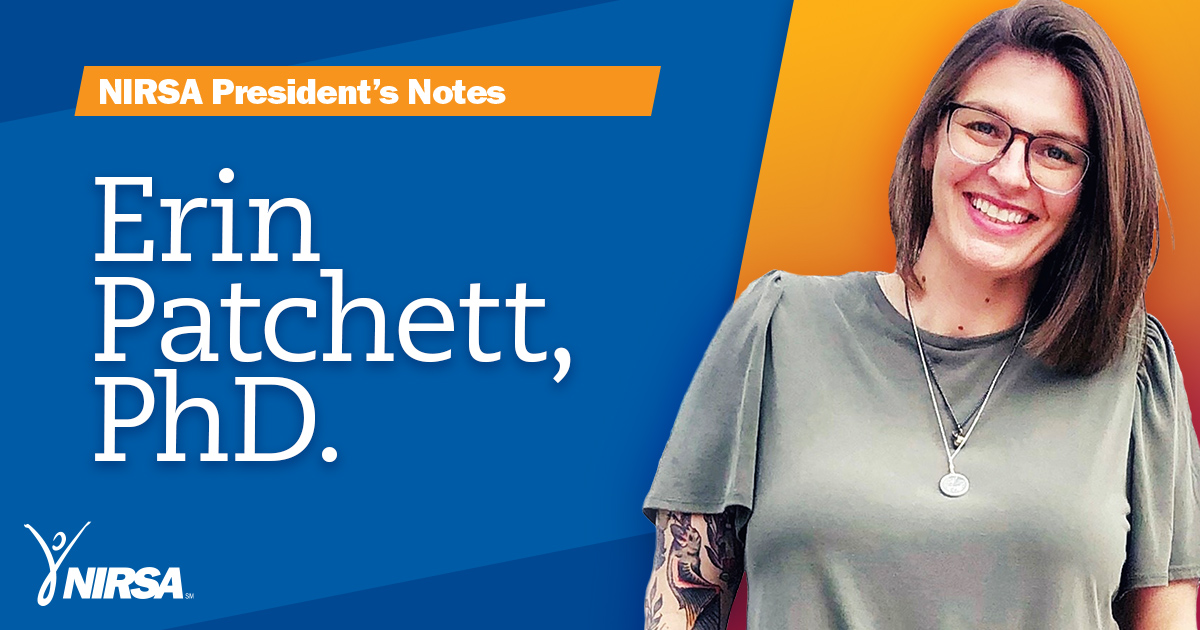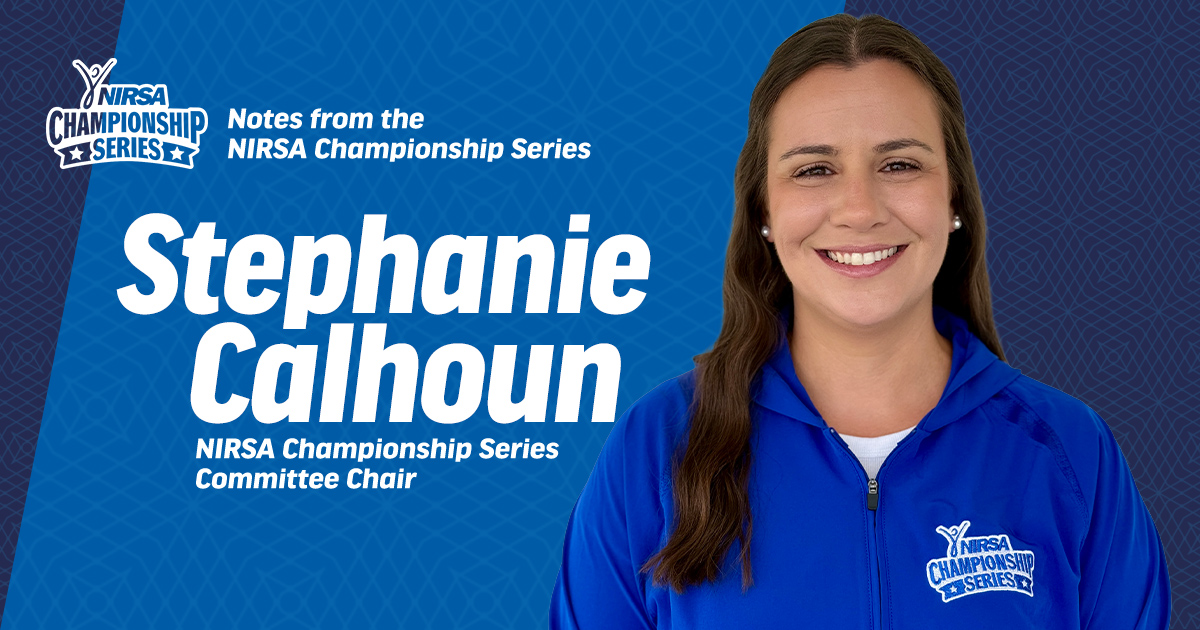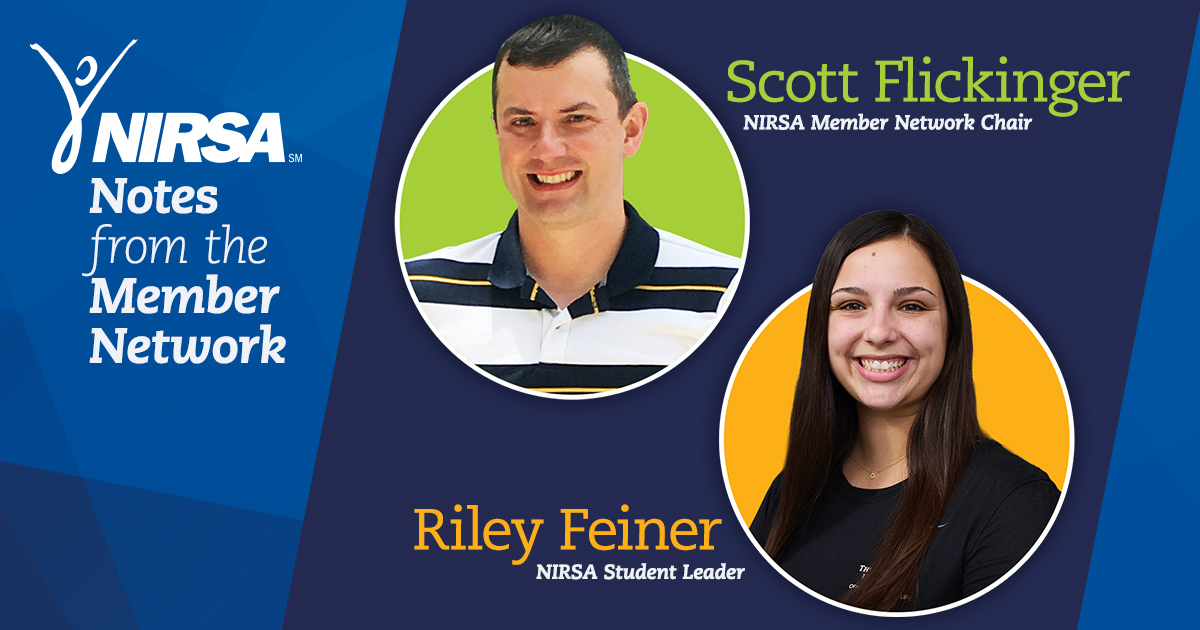Hey peers! This edition of the NIRSA President’s Notes goes live in mid-August, and that could mean you will not have time to read it until September; good luck getting everything up and running for the fall term!
This month, I’m sharing the recently published article “Initial Development and Validation of the Campus Recreation Constraints and Negotiations Questionnaire” by A’Naja M. Newsome, Jeanette M. Garcia, and Robert F. Dedrick . While research has demonstrated the various benefits of recreation participation, we all still have students on our campuses who do not engage in our facilities, programs, and services. In this study, the researchers developed and validated a constraints and negotiations scale that helps us better understand why we may not be reaching some groups of students.
A small disclaimer about the article: On a scale of researchy* to really researchy, this one reaches the awesome heights of researchy, so much so that I—a qualitative-leaning researcher—needed to call in the help of a friend to fully make meaning of it. Luckily, I happened to have served in a volunteer NIRSA leadership role with Dr. A’Naja Newsome, one of the coauthors of the article. She joined me for a video call** and shared her thoughts about how practitioners can engage with the outcomes of this study.
*Possibly not a word (yet).
**Her tiny, cute baby also joined us on the call. Shout out to all the working parents and caregivers out there! Research + coffee + cute baby = best video call ever.
Research to practice opportunities
First, I want to share why Dr. Newsome was interested in doing research on this topic. In our discussion, she shared that as practitioners, we sometimes position our barriers and facilitators when we think about recreation participation among students. With their instrument, we can understand the barriers as they are described by the students themselves; this approach gives us a more accurate picture and can lead to better alignment when we attempt to minimize the barriers through policies and programs.
Do you need to learn more about the students on your campus? Perhaps for a program review or to align with your unit’s assessment plan? The article encourages using the validated questionnaire to assess participants on your campus. There is no need to write an assessment when a validated tool is ready for you to use!
We also talked about social marketing. Have you heard of it? According to the practical implications section of their article, it’s a “public health principle that could enhance marketing and promotion efforts.” Using the questionnaire to better understand your students can then inform how you market to those students to help them maintain or change their behaviors. In short, they tell you what they want and then you market to that problem!
Be on the lookout for additional articles from Dr. Newsome. She shared on our call that she has another paper that will soon be coming out on this topic, and it will look more deeply at how demographics impact the barriers and facilitators discussed in the “Initial Development and Validation of the Campus Recreation Constraints and Negotiations Questionnaire” article.
Stay nerdy, my friends.
-EP
Newsome, A. M., Garcia, J. M., & Dedrick, R. F. (2024). Initial Development and Validation of the Campus Recreation Constraints and Negotiations Questionnaire. Recreational Sports Journal, 48(1), 14-26. https://doi.org/10.1177/15588661231219085
Erin Patchett, PhD., is currently the Director, Administration & Assessment for Campus Recreation at Colorado State University and the President for the NIRSA Board of Directors; you can email her at erin.patchett@colostate.edu.






